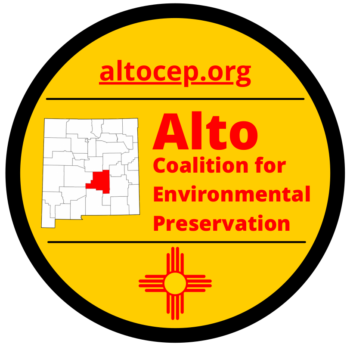Sacrifice Zone — What is it?
November 3, 2023
By: Galen Farrington
What is a Sacrifice Zone?
When I taught freshman English at Eastern New Mexico University-Ruidoso, I taught the two-part selection, “Cancer Alley, The Poisoning of the American South” and the class was introduced to the concept of Environmental Justice and specifically the term “environmental racism.” Today, ten years later, those living along the 85-mile stretch along the Mississippi River have a cancer risk 47 times the US Environmental Protection Agency’s “acceptable” standard due to poor air and water quality Their lives continue to be sacrificed in the name of progress.
Fifty years ago the mining industry moved into the Four Corners area and promptly compromised the culture of our Hopi, Navajo, and Mormon communities. As a result of the cultural devastation, the 1983 Academy Award film, Four Corners: A National Sacrifice Area? was released. And for the most part, ignored.
Today, there are more than 250,000 Americans living in areas where incidences of cancer caused by air pollution exceed the EPA’s current upper limit of acceptable risk. Fruitland, New Mexico in the Four Corners area, currently has a cancer risk documented at 29 times the national “acceptable” standard. The health and well-being of these 249 people have been sacrificed in the name of industrial progress.
On 6 April 2023, NBC televised a news story featuring Michael Regan, the current EPA Director, who was on “a journey to justice tour.” The tour focused on his visit to an elementary school approximately 450 feet from the Denka rubber plant in the infamous 85 mile Cancer Alley of Louisiana. When asked about the term “sacrifice zone” his response in part was, “… There are none of these facilities in Beverly Hills … most of these individuals are Black, Brown, Tribal and/or low income … . There is a consistent pattern here.”
The Climate Reality Project intensifies the definition as “Sacrifice Zones are often defined as populated areas with high levels of pollution and environmental hazards … (due) to nearby toxic or polluting industrial facilities. These are called ‘sacrifice zones’ because the health and safety of people in these communities is being effectively sacrificed for the economic gains and prosperity of others.”
The New Mexico Environment Department understands this concept and verifies the practice when, on its Air Quality Permit application, it mandates notification of property owners within one half mile and Tribal entities within ten miles of a proposed industrial build site such as a concrete batch plant. NMED also asks for the identification of “sensitive areas” including populations of children and the elderly. After receiving unprecedented local opposition, NMED wisely chose to protect the people and the environment when the Department denied the application for the proposed concrete batch plant on the State Highway 220 corridor and possibly terminating the publicly declared creation of an area industrial complex that would compromise the well-being of invisible New Mexicans. Now the Environmental Improvement Board, in a complete disregard for the residents of the area, reversed the Cabinet Secretary’s “final decision,” a decree which is currently the subject of a lengthy appeal.
There are many Americans who have paid the price of invisibility due to the lack of resources to fight environmental injustice. The world’s number one consumer product, concrete (which uses the world’s number one resource, water), costs too many New Mexicans their health and well-being because of their socio-economic positioning.
There are approximately 140 residents and property owners who live within this newly created sacrifice zone on the Billy the Kid National Scenic Byway. Historically, even within the state of New Mexico, there have been proven environmentally sound alternatives for industrial enterprises. The contractor proposing the concrete batch plant site on State Highway 220 has a 146 acre isolated tract of land where he has a current rock crushing facility a mere five miles away. He has alternative location choices. Communities need to collectively enable appropriate humanitarian and environmental solutions that enable equatable business outcomes.
No one should have to die in the name of progress.
…………………………………………………………………………………………………………………………………………………………………………………………………………………………………………
